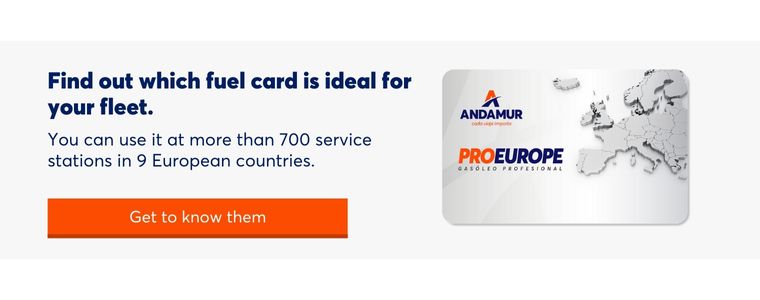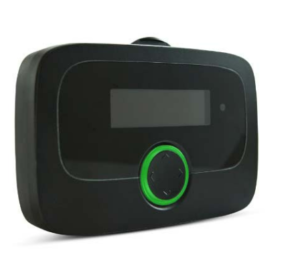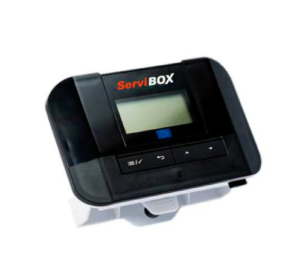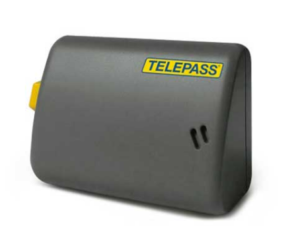In this article, we’ll explore a crucial topic: how to save fuel in truck fleets. Join us as we dive into the importance of energy efficiency, the use of fuel cards, and practical tips for reducing consumption.
The importance of energy efficiency and fuel savings in road transport
Many transport companies wonder how they can save fuel in their truck fleets, given that fuel consumption directly impacts business profitability. In the quest to optimize road mobility costs, energy efficiency and fuel savings go hand in hand, as when one of these factors decreases, the other inevitably follows.
Today, environmental pollution is on everyone’s mind, and companies with environmental responsibility have already begun adopting concrete measures to reduce emissions. Having a strategy and actions in place to lower emissions is key to positioning your business as a responsible and environmentally conscious company. In this sense, reducing fuel use is a vital action.
Beyond protecting the environment by lowering emissions, transport companies can save significant amounts of money, leading to a direct improvement in profitability.
How can I save fuel with my truck?
It’s important for truck fleet drivers to understand the significant savings that come from implementing small actions while driving. Let’s look at some tips that answer the question: how can I save fuel with my truck?
- Reduce speed, as it is one of the biggest factors in fuel consumption. Driving at 95 km/h can reduce fuel consumption by a tenth of a kilometer per gallon.
- Optimize the miles traveled by planning routes and destinations. For example, using a GPS to take the shortest, fastest route, planning stops to avoid unnecessary breaks, and concentrating deliveries or transfers within a specific area.
- Monitor the RPM recommended for your truck’s engine, ensuring that the engine runs at optimal revolutions without unnecessary strain, which would otherwise increase fuel consumption.
- Minimize unnecessary acceleration or constant gear changes in certain sections. Even reducing the continuous speed can help avoid the need for quick acceleration, which demands more fuel.
- Use fuel cards to save on refueling costs and gain significant bonuses.
- Keep windows closed. While using air conditioning can increase fuel consumption by 15%, it’s advisable to use it on highways and high-speed routes since open windows affect the vehicle’s aerodynamics, hindering fuel savings.
Fleet control: What factors influence fuel savings?
Multiple factors can affect fuel consumption in truck fleets. Below are the most relevant ones to consider:
- Type of transport: Factors such as the size, engine, age, and aerodynamics of the truck all influence fuel consumption.
- Road conditions: Fuel consumption will vary depending on whether you’re driving on highways, national roads, or secondary roads.
- Load and total weight: The heavier the load, the more fuel the truck will consume.
- Driver behavior: Speed, braking habits, and acceleration will significantly impact fuel consumption.
Tips to save fuel in your truck
To save fuel in your truck, first ensure that your vehicle is in top condition by keeping up with maintenance checks and making necessary technical adjustments. Additionally, plan your routes and destinations to optimize travel as much as possible.
Here are our recommendations for reducing fuel consumption:
- Refuel at the closest service stations to exits.
- Use higher gears and maintain a steady speed.
- Use the engine brake.
- Avoid sudden accelerations and abrupt starts.
- Keep the windows closed.
- Turn off the engine whenever it is idle.
- Remember that excessive speed does not align with fuel savings.
- Control and optimize weight by carrying only what’s necessary.
Fuel cards for truck fleet savings
Fuel cards for businesses are excellent allies for saving fuel in your truck fleet, offering significant bonuses every time fuel is purchased.
At Andamur, we provide the best solutions to simplify and make your management more profitable, allowing you to manage costs related to fuel, AdBlue, and Andamur Secure Parking while enjoying the benefits of our fuel cards.
- With Andamur, you’ll enjoy:
- 100% Andamur security and guarantee.
- Card linked to a specific vehicle/driver.
- AirCODE TOTAL SECURITY during refueling.
- Card limits tailored to your needs.
- Immediate blocking if necessary.
- Detailed consumption tracking with invoices broken down by license plate.
- Free with no fees.
Additionally, you can use it at over 900 service stations across 9 European countries. At Andamur, we offer the best solutions to save fuel and boost your truck fleet’s efficiency.





